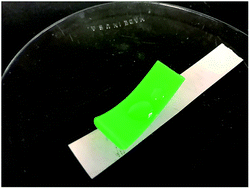HPLC detection of organic gunshot residues collected with silicone wristbands
Abstract
Gunshot Residue (GSR) is a common subject in criminal analysis due to the frequency of firearm-related crimes. There have been multiple studies aimed at determining the fastest and most efficient techniques to collect and detect GSR. Scanning Electron Microscopy remains a popular technique in the analysis of key Inorganic Gunshot Residues (IGSR) such as barium, lead, and antimony. However, introduction of heavy-metal-free ammunition creates the need for a different approach. This research focuses on developing a robust HPLC procedure for separation and detection of five Organic Gunshot Residues (OGSR), dimethylphthalate (DMP), diphenylamine (DPA), 2-nitrodiphenylamine (2-NDPA), 4-nitrodiphenylamine (4-NDPA), and ethyl centralite (EC) collected through passive sampling with silicone wristbands. By calculating figures of merit including resolution, retention factor, selectivity factor, theoretical plate number and height, and limit of detection for different HPLC conditions, it was found that water/acetonitrile (52 : 48) is the most efficient mobile phase using a Poroshell 120 EC-C18 column. The HPLC data showed that silicone wristbands are capable of adsorbing the selected OGSR compounds in laboratory settings. Compounds appeared to adsorb better individually than as a mix. This paper details the careful method development for the analysis of OGSR extracted from silicone bracelet. It provides researchers with the foundation required to move forward with real-world forensic samples by validating the important process of sample collection, extraction, and analysis.



 Please wait while we load your content...
Please wait while we load your content...